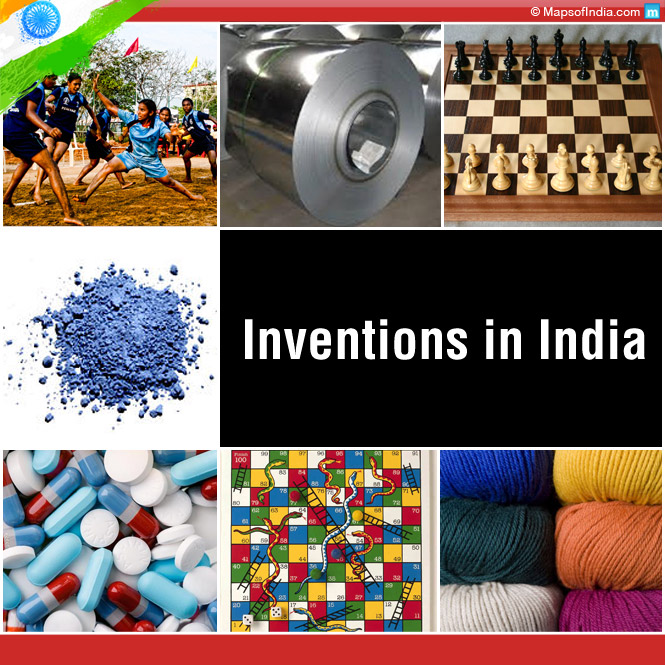India has given us many reasons to be proud of. From greatest scholars like Aryabhata, Homi J. Bhabha, A. P. J. Abdul Kalam to eminent scientists like CV Raman, Satyendra Nath Bose, Meghnad Saha and many more. India is witness to numerous stories of achievements and inventions that made difference around the globe.
Not just this, it has given its contributions in the fields of astronomy, architecture, metallurgy, logic, cartography, mathematics, medicine, mineralogy, automobile engineering, communications, information technology, space research, and polar technology, etc.
Right from the discovery of ‘zero’ by Aryabhata to the use of flush toilets to other modern technologies, we come across several inventions and discoveries in India, which are accepted by everyone all across the globe, and for which we should be proud.
We present below some of such well-known inventions and discoveries which are accepted universally, though many of them may not be aware of its origin:
- Zero and the number system: It was around 458 AD, the concept of zero first appeared in India. Hindu astronomer and mathematician named Aryabhata was the first person to create a symbol for zero and it was through his efforts, that mathematical operations like addition and subtraction started using zero. For the first time, zero became globally recognized as a number of its own. Also, the number system that we use today with decimal place-value and zero was also invented in India between the 1st and 6th centuries, as clearly mentioned in Aryabhata’s Bakhshali manuscript.
- Buttons: Excavations in Mohenjodaro of Indus Valley Civilisation revealed the existence of buttons, which were used by the people at that time not for fastening but for ornamental purposes. Buttons were thus invented in India and they were made of shells with two holes at the centre.
- Prefabricated home and movable structure: It is said that during Akbar’s rule in India, there was the existence of the prefabricated and movable structures. They were first invented in the 16th century in India during the Mughal rule.
- Natural fibres: The varied natural fibres like wool and cotton originated in India. Prior to this, the Greeks used to wear animal skin. During the 5th–4th millennium BCE in the Indus Valley Civilization, people started cotton and jute cultivation. India then invented the art of cotton spinning and later it was converted to fabric. It is also said that cashmere wool, derived from the Kashmir goats, was made in Kashmir first. Even today, cashmere shawls and woolens have maintained their richness and exclusivity.
- Cataract surgery: The first cataract surgery was performed by the ancient Indian physician Sushruta, way back in the 6th century BCE. To remove the cataract from the eyes, he pushed the lens and used a curved needle to remove it, which were then kept immersed in warm butter for a few days till they were healed completely. Many people from various other countries came to India to seek treatment from Sushruta. His surgical works were later translated into the Arabic language and got transported to the European countries.
- Some medical treatments: Indians were the first to identify leprosy and many remedies for this disease were found in the Atharva Veda. The treatment of removing stones or the lithiasis treatment was first introduced in India. Historical studies have shown that in the 8th century, a well-known scholar Madhav mentioned the symptoms and ways of immunization against small pox. We also have heard that the two ancient and alternative methods of treatment still popular, Ayurveda and Siddha, originated in India. They are still used for holistic healing. It was the ancient rishis and munis of India who mastered this method of treatment. Upendra Nath Bramhachari, a Nobel prize nominee and Indian medical practitioner, invented methods to treat visceral leishmaniasis or kala azar or black fever.
- Radio/wireless communication: In 1909, Guglielmo Marconi received the Nobel Prize in Physics, for his efforts in the development of wireless telegraphy. But, not many know that it was Sir Jagdish Chandra Bose who made the first public demonstration of radio communication waves in 1895, two years before Marconi’s demonstration in England. More than a century later, Sir Bose was posthumously credited for his achievement, which truly shaped the face of modern wireless communication.
- Shampoo: We use the word “champo” for head massage even today. The Nawabs of Bengal around 1762 during the Mughal rule, used head massage oil which was referred to as champo. The word shampoo is derived from champo. Over the years, the champo oil got evolved into shampoo.
- Diamonds: Do you know that diamonds were first discovered in India? Huge deposits of diamonds were found in the midst of the alluvial deposits along the rivers Krishna and Godavari in central India. They were mined from there almost 5,000 years ago. Gradually, they were developed into precious stones as mentioned in various ancient Indian books. Till the 18th century, India was the only country where diamonds were found and later on these sparkling stones were found in the mines of Brazil.
- Rockets: It was in the 1780s, Tipu Sultan, ruler of the South Indian Kingdom of Mysore, and his father Hyder Ali first made use of iron-cased and metal-cylinder rockets against the large British East India Company’s forces during the Anglo-Mysore Wars. So the first invention of rockets started in India.
- First flush: The remains and the historical studies of the Indus Valley Civilisation that existed in India over 5,000 years ago, revealed how India at that time had created highly advanced canals, along with irrigation, water management, and sewage systems. The world’s first flush toilets were also discovered in most homes in the Indus Valley Civilisation, which is supposed to be the largest ancient civilisation in the world.
- Steel and metal works: Indians were also the pioneers in metallurgy. Sounds strange, isn’t it? But as a matter of fact, high-quality steel was produced in India almost 2,000 years back, much before it was used in the West. A seamless celestial globe was also invented for the first time in Kashmir, which is till today considered as one of the most remarkable achievements in metallurgy. Prior to this, it was considered impossible to make a globe made of metal without seams.
- Systematic organized education system: How can we forget our ancient Taxila, Nalanda, and other universities which introduced a systematic education system? Residential schooling or schools with hostels or in ancient terminology “Gurukul” also started in India, where a single teacher taught several students at a time.
These were a few of the many inventions and discoveries that took place in India and are now universally accepted. Other contributions of India to the world includes Chess, snakes and ladders, basmati rice, yoga, Sanskrit, Ayurveda, water on the moon, plastic surgery, binary system, ink, Fibonacci numbers, fiber optics, USB, and many more. As a matter of fact, the list is quite long to cover all ancient inventions and discoveries made in India.





